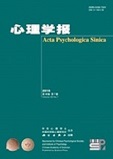A controversial in word production is that how speakers retrieve words from the mental lexicon. The picture-word interference (hereafter PWI) paradigm has been broadly used to investigate this issue. In this task, speakers are instructed to name pictures while ignoring written distractor words superimposed onto the pictures. A typical finding is the semantic interference effect, which is that categorically related distractors (e.g., bus) slow down picture naming (e.g., car) relative to unrelated distractors (e.g., pen). By varying stimulus onset asynchrony (SOA) between pictures and distractors, studies have reported semantic facilitation effect when semantically related distractors were presented before pictures such as 400 ms (-400 ms), and semantic interference effect when semantically related distractors were presented closely to pictures. Lexical competition hypothesis assumes that semantic interference reflects the lexical selection competition among co-activated semantically related lexical representations during lemma retrieval, while response exclusion hypothesis assumes that semantically related distractors are more difficult to exclude from the response buffer than unrelated ones. It assumes that semantic facilitation effect arises at the conceptual processing. However, little is known about the temporal courses of both effects. The present study aims to examine the influence of SOA on semantic effect with the PWI task using electrophysiological measures.
Forty-five undergraduate and graduate students participate in the experiment (22 males, average 22.85 years). Forty-two black and white line pictures were chosen from a standardized picture database as targets with disyllabic names. Each target picture was paired with a semantically related distractor word and an unrelated distractor word. Context words in the semantically related condition were then recombined with the picture names to form unrelated conditions. Target pictures and context words are basic-level concepts selected from 14 semantic categories. The experimental design included relatedness (semantically related vs. semantically unrelated), SOA (-400 vs. 0 ms) and repetition (first vs. second) as within-participants factors.
Behavioral results indicated a typical semantic interference effect at SOA of 0 ms while the semantic effect was absent at SOA of -400 ms. Electrophysiological results showed that at SOA of 0 ms semantically related distractors elicited a smaller modulated waveform than unrelated ones in the time window of 344~414 ms in the first repetition and 356~418 ms in the second repetition. There was a larger waveform in the semantically related distractors than unrelated ones in the time window of 462~594 ms in the first repetition and 460~544 ms in the second repetition. At SOA of -400 ms, results showed an early semantic effect in the time window of 0~76 ms in the first repetition but disappeared in the second repetition, and a late semantic effect in the time window of 284~390 ms in the first repetition and 274~382 ms in the second repetition.
In sum, the present findings indicated that there is a semantic facilitation effect arising at the conceptual processing (0~200 ms) and a semantic interference effect arising at the lexical selection stage (250~450 ms) in Chinese spoken word production. Our findings firstly provide evidence for lexical competition hypothesis rather than response exclusion hypothesis. Furthermore, with high-time resolution measures, we firstly provide electrophysiological evidence for the trade-off of semantic facilitation and interference effect in spoken word production.




